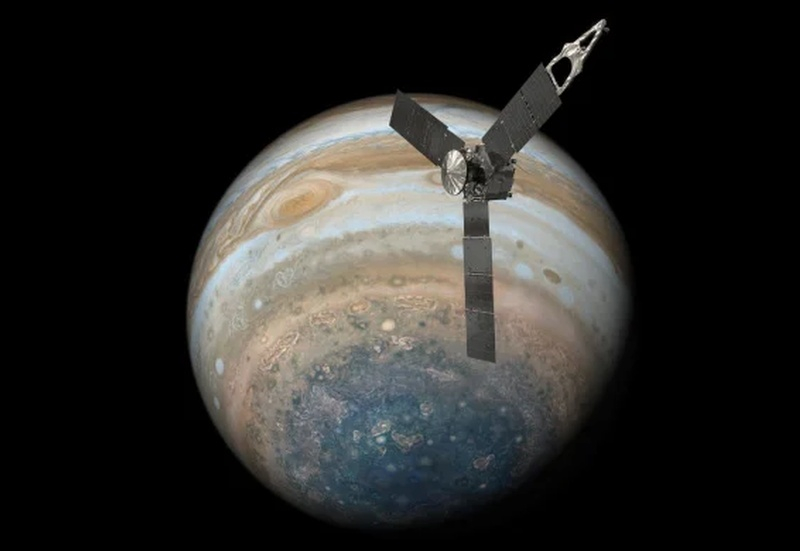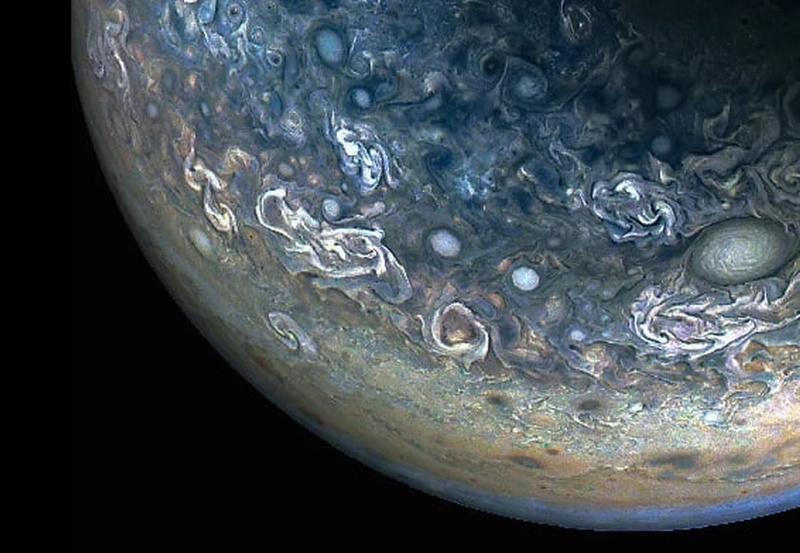The Juno mission arrived at Jupiter in 2016, covering a distance of 2.74 billion kilometers from Earth. The spacecraft’s cameras provided NASA with dramatic images that led to groundbreaking discoveries not only on Jupiter, but also on its moons Europa and Io. One of the latest images shows a view of the gas giant’s northern hemisphere with what NASA describes as “chaotic clouds and cyclonic storms.”

Image source: NASA
The Juno mission team is making images captured by the space probe freely available, allowing anyone to unleash their creative potential in photo manipulation. The image, based on a photograph dated May 12, 2024, was created by researcher Gary Eason using digital processing techniques to enhance color and clarity. At the time of filming, Juno was making its 61st orbit around Jupiter at an altitude of about 29,000 km.
Eason captured a detailed image of what NASA describes as “chaotic clouds and cyclonic storms” in an area scientists know as the “folded filamentary region” in the gas giant’s northern hemisphere. In this area, the zonal jets that create the familiar striped patterns of Jupiter’s clouds are destroyed. This leads to turbulence and cloud structures that change over several days.

Other researchers also provided processed images of Jupiter and its moons. One helped more accurately determine cloud heights and other features that were difficult to discern in raw images from the spacecraft. Another combined images of individual cyclones near the north pole, and the finished image surprised researchers because it showed a “funnel” of complementary storms rotating around a central vortex.
«Juno will continue studying Jupiter until September 2025. The main goal of the study is to help scientists better understand the emergence and evolution of the gas giant. Astronomers believe that Jupiter holds, under its thick cloud cover, the secrets of the fundamental processes that occurred in the solar system during its formation. Although Juno’s main mission ended back in 2021, the probe continues to send back valuable data about Jupiter and its moons.